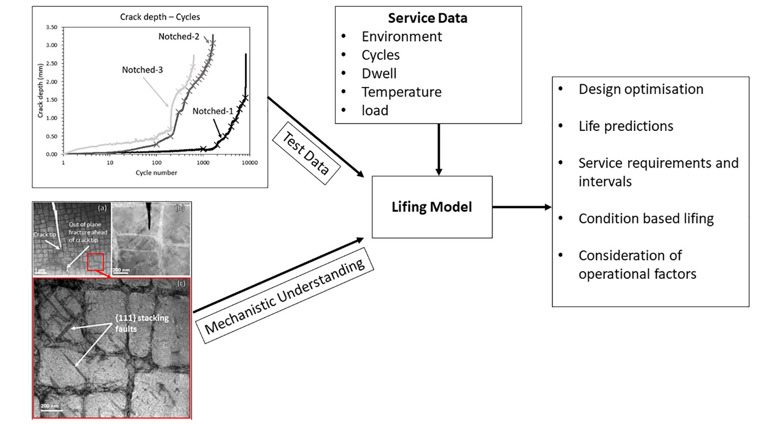-
Client
Confidential
Turbine developers and operators increasingly need their single crystal (SC) turbine blades to withstand higher temperatures and stresses, to achieve higher operational efficiencies and improve the performance of their gas turbine systems.
Our client wanted to ensure it was maximising the efficiency and performance of its single crystal turbine blades, whilst ensuring safe and reliable operation.
To help our client to achieve this, we undertook research and analysis that delivered a better understanding of the interactions between environmental phenomena, such as deposit induced corrosion and oxidation, and cyclic and static loading.
Gather
We designed bespoke fatigue test rigs to measure complex crack propagation in test specimens. The rigs measure crack propagation in the usual way, using the ‘potential drop’ method. However, we are now able to measure cracking rates in response to varying load cycles and dwell periods while specimens are exposed to high temperature corrosive environments.
Understand
The data generated by our test rigs allow us to better understand the interactions between load cycles, load dwell and corrosion cracking rates in material and coating systems.
In particular, we demonstrated several important interactions between corrosion crack growth and fatigue loading. It was observed that the corrosion driven growth initiates cracks quickly in some SC materials and propagates at a linear rate dependant on the corrosive conditions. The ‘pure fatigue’ or cycle dependant crack growth was plotted on Paris plots, where it was shown that crack growth can be suppressed by corrosion, due to either crack opening effects from corrosion products, or crack tip blunting (CTB). However, no evidence was found of CTB in previous microscopy studies [1].
This work has gained industry wide recognition that locations which are exposed to deposit induced corrosion and load, can be subject to aggressive material degradation dependant on material sensitivity and environmental conditions.
Optimise
These results are being used to develop future programmes to understand the nature of crack propagation within high temperature corrosive environments. Ultimately, these activities will inform the development of new lifing methodologies to enable environmental phenomena to be more accurately accounted for, both in the design process and throughout the turbine’s operational and serviceable life (as shown in figure 1).
However, the immediate impact of this work is enabling our client to develop industry leading gas turbines that are cleaner and safer than previous generations.
The results are published in Superalloys 2020, with collaborating research partners Rolls-Royce and Cranfield, and will contribute to ongoing research into deposit induced crack initiation and propagation in nickel based superalloys [2].
Figure 1

Download a larger version of Figure 1 here
References
[1] L.Brooking, S.Gray, K.Dawson, J.R.Nicholls, N.J.Simms, J.Sumner and G.J.Tatlock, "Analysis of combined static load and low temperature hot corrosion induced cracking in CMSX-4 at 550°C," Corrosion Science, vol. 163, 2019.
https://doi.org/10.1016/j.corsci.2019.108293
[2] L.Brooking, C.Ferguson, J.Mason-Flucke, G.Gibson, J.Leggett, I.Palmer, J. .Nicholls and S.Gray, "Measurement and Evaluation of Co-existing Crack Propagation in Single-Crystal Superalloys in Hot Corrosion Fatigue Environments," Superalloys, pp. 771-780, 2020
DOI: 10.1007/978-3-030-51834-9_75

